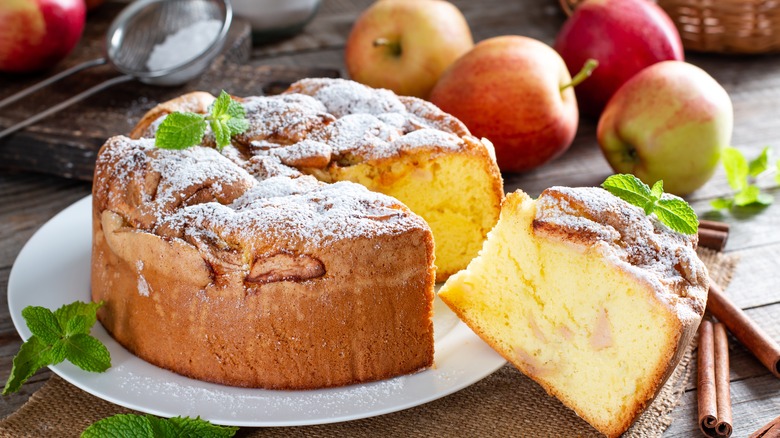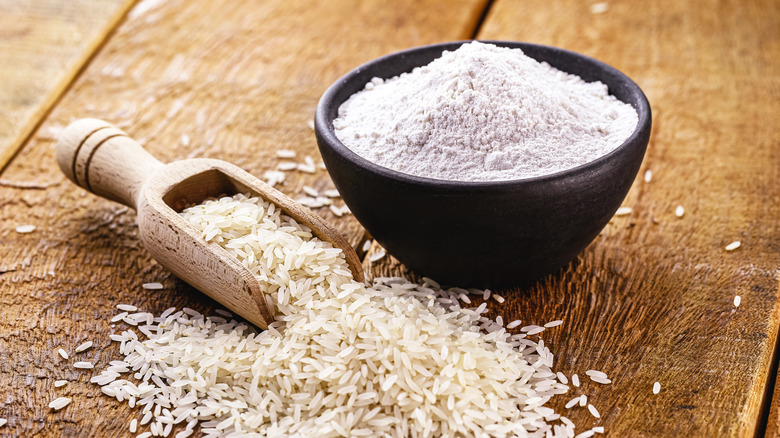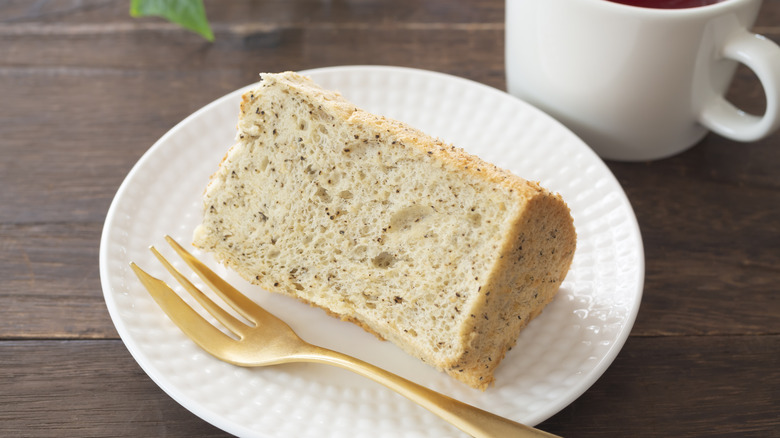The Flour Swap To Consider For The Best Gluten-Free Chiffon Cake
These days are a golden age for anyone suffering from celiac disease and gluten sensitivity. Gone are the times of chewy, gluey pastas and gummy loaves of bread thanks to all of the different flours like brown rice, sorghum, potatoes, almonds, and more. In fact, you can make almost any recipe gluten free, including delicate chiffon cakes. Just like when you make a cake from wheat flour, however, it's important to choose the right type of flour for making the delicate dessert so that it rises properly with a light, airy texture. If you're making a chiffon cake with wheat flour, you'd use cake flour. And similarly, to make a gluten-free chiffon cake you should use a fine, low-starch flour like rice flour.
Some cakes, like chocolate and carrot cake, are designed to be dense, and they're easily made with all purpose flour because they're leavened with baking powder and baking soda. Chiffon, on the other hand, is leavened with eggs, which is a much more fragile method. Not only that, some gluten-free flours can give your cake a gritty texture. If you love chiffon cake, but gluten is off the menu, look for recipes that use rice flour because they'll have the best results.
Rice flour is perfect for chiffon
Learning to bake without gluten takes a little getting used to and one of the biggest hurdles is learning how to work with alternative flours. When it comes to wheat flour, all you mostly need to know is the difference between all purpose, bread, and cake flour. Gluten-free flours, however, are made with all different ingredients, each of which has different starch levels. They're also manufactured differently, with different milling techniques and textures.
Rice flour is made by milling any kind of rice, although it's most commonly made from medium or long-grain white rice. The rice can be ground either using wet milling or dry milling, but the super silky stuff is made with wet milling, which creates a fine powder that's very similar in texture to cake flour.
That light, less starchy texture is important when it comes to baking chiffon cake, because the goal is a light, tender crumb, which only a super-fine flour like this can achieve. This is because most of the leavening is done with whipped egg whites, which trap air bubbles in the batter to make it light and fluffy. The batter needs to be as light as possible so that it doesn't crush the air bubbles, just like in a soufflé.
Rice flour has a smooth texture
The lightness of rice flour isn't the only advantage of using it for making chiffon cake. If you've ever baked with gluten-free flours like sorghum, you know that they can have a sandy, gritty texture. White rice flour is very fine, however, so your cake won't suffer from any graininess. It's important to make sure your flour is made with white rice, not brown rice, because brown rice flour contains the ground hulls of the rice granules, which is what makes it gritty.
Look for white rice flour in the baking section of any well-stocked grocery store. If you can't find rice flour in your regular grocery store in the baking aisle, check the section where Asian groceries are stocked. You can also find rice flour in any Asian grocery store.
Even chiffon cake needs some starch to hold its shape, however. Regular cake flour has gluten to keep its shape, but for a gluten-free chiffon you may need to add some percentage of other starchy things like tapioca flour or potato starch to get the same structure. With the right ratio, you'll get a pillowy-soft chiffon that'll taste (and feel) just the same as a cake made with wheat flour.


